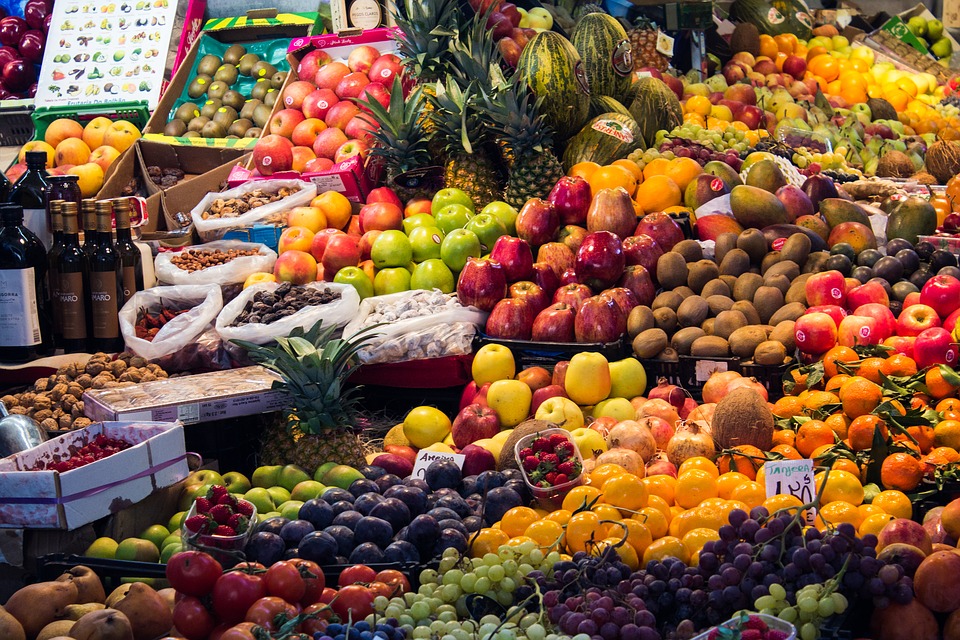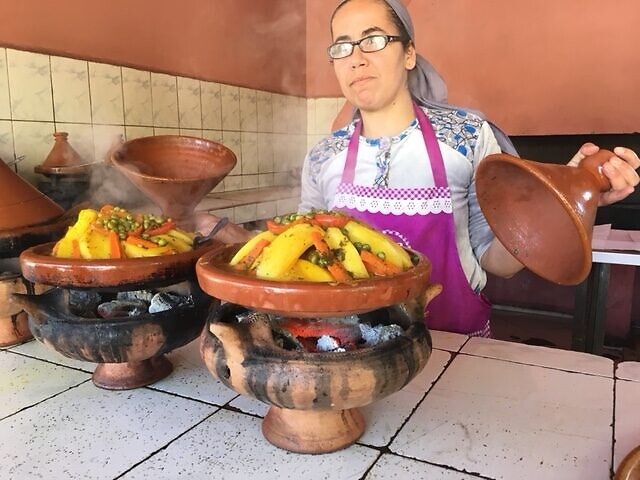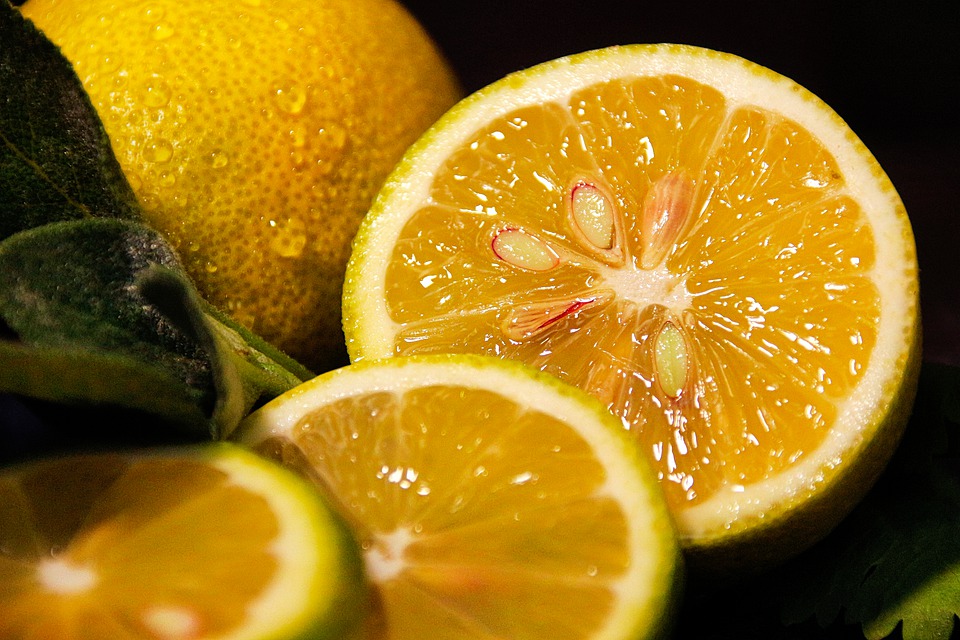Purim, which is celebrated on the 14th day of the Jewish month of Adar (this year starting on March 16), commemorates the saving of the Jewish people from Haman’s plot to kill the region’s Jews in a single day. His plan was foiled by Queen Esther and her cousin Mordecai.
Purim is a holiday for Jews of all ages to rejoice and have fun. The little ones are showered in treats and those over 21 can enjoy a drink or two. Indeed, they are told to do so. The sages of the Talmud assert that “a person is obligated to drink on Purim until he does not know the difference between “blessed is Mordechai and cursed is Haman.” (If imbibing, be sure to have a designated driver!) Kids and adults dress up to parade around in costume. When the Megillah is read, it’s absolutely required to make noise when Haman is mentioned; spinning groggers, stamping feet and loud booing drown out Haman’s name.
Northern Morocco was part of ancient Persia where spices, such as cinnamon, cumin, ginger and coriander were used liberally. On a pre-COVID trip to Morocco—and that was before the country signed on to the Abraham Accords in the fall of 2020 to renew ties with Israel—I came back with some of the recipes below. Include one or two in your festive Purim meal.
Moroccan Tea, also called Maghrebi, is fragrant and syrupy sweet. There’s an art in serving it. With one arm raised, the tea is poured into small decorated glasses to aerate and create a light foam. When offered, always accept to avoid insulting your host. Tagines are a traditional Moroccan dish served everywhere and eaten any time during the day. You’ll find the colorful pots filled with meat and vegetable stews, livened with mouth-watering spicy aromas at roadside stands as well as on upscale menus. The conical shape of a tagine creates a hot, moist environment for whatever is cooked. The base is wide and shallow, and the lid fits tightly inside. As the food cooks, steam rises into the cone, then trickles down into the dish.
I first tasted Brown Boiled Eggs in a Casablanca souk, a mellow, tasty street snack. Oil keeps the water from evaporating during the long cooking process. You’ll find Pickled Lemons in every Moroccan kitchen; it’s the essential zest to savory dishes, like couscous, soups and stews. Add a smidgeon to cakes and desserts as well to elevate them from ordinary to the divine.
The similarity between mohn in Yiddish and the name “Haman” made poppy seeds popular at Purim. For meringues, I simply fold a spoonful of poppy seeds into a basic meringue mixture. Don’t be intimidated. There are only three ingredients, so whisk and leave overnight in the oven. Just be sure all utensils are scrupulously clean and not a speck of yolk gets into the whites. Separate each egg over a cup before adding the whites to a bowl. That way, if you break a yolk, it won’t spoil the rest of the whites.
And for the easiest dessert eaten at a fancy restaurant, simply fold yogurt into pomegranate kernels. It makes for a delicious contrast: crunchy and creamy.
Chag Purim Sameach!

MENU
Moroccan Mint Tea
Brown Boiled Eggs
Pickled Lemons
Chicken Tagine
Lemon Couscous
Mohn Meringues
Almond Konafa
Simple Pomegranate Dessert

Moroccan Mint Tea (Pareve)
Serves 4-6
Cook’s Tips:
*No need to search for gunpowder tea; tea leaves rolled into tiny balls. Green tea is just fine.
*Instead of loose tea, use 3 green tea bags.
Ingredients:
4 cups boiling water
10 sprigs (about ½ cup tightly packed) fresh mint leaves
1 tablespoon green tea leaves
3 tablespoons sugar
Directions:
Swirl about ¼ cup boiling water around in a pot to warm.
Add the mint, pressing with a spoon to release flavor. Add the green tea and sugar.
Pour the remaining water over top. Stir to dissolve the sugar, cover and brew for 3 minutes. Stir lightly.
Pour into small glasses (shot glasses work fine) and serve.

Brown-Boiled Eggs (Pareve)
Makes 12; can be made 1 to 2 days ahead of time
Cook’s Tips:
*No need to brew coffee. Stir 1 tablespoon instant coffee into 1 cup hot water.
*Cool before use. Or use leftover coffee, adding 1 teaspoon instant.
*Substitute 2 teaspoons loose tea for two tea bags.
Ingredients:
12 eggs
1 cup of cold strong coffee
2 tea bags
brown skin of 2 large onions
⅔ cup vegetable oil
Directions:
Place eggs carefully in a large, heavy saucepan.
Pour enough cold water over to come about 2 inches above the eggs.
Add the coffee, tea, onion skins and oil. Bring to simmer over a medium heat.
Cover and reduce heat to simmer. The liquid should never be more than barely simmering.
Cook for 4-5 hours, adding more water as needed. Remove from liquid. Refrigerate.
Serve cold, in the shell.

Pickled Lemons (Pareve)
Makes 1 quart
Cook’s Tips:
*Lasts up to 6 months or more in refrigerator as long as brine is covering them.
*Add to dishes such as stews, dressings and couscous.
Ingredients:
8 lemons
kosher salt
vegetable or olive oil
Directions:
Bring a large pot of water to a boil.
Add lemons and boil for 2 minutes. Drain and rinse under cold water.
Cut 7 lemons in quarters leaving the wedges attached at one end.
Sprinkle a rounded teaspoon of salt into each lemon. Sprinkle 1 tablespoon salt over the bottom of a clean 1-quart canning jar.
Pack the lemons into the jar, pressing down to fit snugly.
Cut the remaining lemon in half. Squeeze the juice into the jar.
Sprinkle 1 teaspoon salt into each cut half. Add to the jar, cut side down and press.
Pour enough olive oil into the jar to cover lemons. Cover tightly with lid. Let stand at room temperature for 10 days or until the skins are translucent.
Store in refrigerator 3-6 months. Use as needed.

Chicken Tagine (Meat)
Serves 6-8
Cook’s Tips:
*Substitute 1½ pounds cubed lamb for chicken.
*May cook in a crock pot. Sear chicken before adding to pot.
*Chopped ginger is available in the vegetable section of markets.
*Pereg makes a kosher Moroccan spice blend. Use 3 teaspoons to replace ginger, cumin and cinnamon. Available in some markets and online.
Ingredients:
olive or vegetable oil
8 chicken thighs (about 3 pounds)
Salt and fresh ground pepper
1 medium onion, thinly sliced
3 baby carrots, cut in ½-inch slices
1½ teaspoons bottled minced garlic
1 tablespoon chopped fresh ginger root
2 teaspoons cumin
1 teaspoon cinnamon
1 cup chicken stock
½ cup dried apricots, snipped coarsely
1 tablespoon honey
1 (15-ounce can) chickpeas, drained
6 pitted dates, halved lengthwise
Directions:
Heat 1 tablespoon oil in a heavy pot (5-6 quarts) over medium heat.
Sprinkle the chicken with salt and pepper. Place the chicken in the pot in one layer.
Sear to golden brown on all sides. You may have to do this in two batches adding a little more oil for the second batch. Remove and set aside.
Add the onion and carrots to the pot. Cook over medium heat until beginning to brown, 5-10 minutes.
Stir in the garlic. Cook 10 seconds. Add the ginger, cumin and cinnamon.
Stir and cook slowly for 1 minute to release flavors. Stir in the chicken stock, apricots and almonds. Arrange the chicken on top. Bring to a boil.
Cover and reduce heat to simmer. Cook for 50-60 minutes until chicken is cooked (no pink remains when tested with a sharp knife.)
Transfer the chicken to a large, shallow serving dish. Add the honey and chickpeas to the pot. Bring to a boil over medium-high heat. Cook until liquid is slightly thickened.
To serve: Spoon over lemon couscous and scatter dates to garnish.

Lemon Couscous (Pareve)
Serves 6-8
Cook’s Tips:
*Use chicken broth instead of water to prepare the couscous; it is now a meat meal.
*Substitute 2 tablespoons lemon juice and 1 teaspoon lemon zest for the pickled lemon.
Ingredients:
2 (6 ounce) packages couscous
1 tablespoon chopped pickled lemon
2 tablespoons chopped fresh parsley
½ teaspoon garlic powder
Directions:
Prepare couscous according to package directions.
Stir in the lemon, parsley and garlic powder. Heap onto a large platter with tagine spooned over.
Serve hot.

Mohn Meringues (Pareve)
Makes 20-25
Cook’s Tips:
*Shaved bittersweet chocolate may be added instead of poppy seeds.
Ingredients:
4 egg whites
1 cup sugar
2 teaspoons poppy seeds
Directions:
Preheat oven to 225 degrees.
Line 2 large cookie sheets with parchment. Spray lightly with nonstick vegetable spray.
In a large bowl, beat the egg whites until they peak softly.
Add sugar gradually, 2 tablespoons at a time. Continue beating until stiff and glossy peaks form.
Fold in the poppy seeds.
Drop tablespoons of meringue onto prepared cookie sheets or press through a pastry bag with a large star nozzle.
Bake in a preheated oven for 1 hour. Turn oven off. Leave meringues in the oven without opening the door for 3-4 hours or overnight to dry completely.
Store in an airtight container in a cool dry place. Do not refrigerate.

Almond Konafa (Dairy)
Serves 12-16
Cook’s Tips:
*To make pareve, substitute melted margarine for the butter.
*If you can’t find konafa in store, shred filo dough finely with a sharp knife.
Ingredients:
½ pound almonds, finely chopped
¾ cup, plus 2 teaspoons, sugar
½ pound frozen konafa, thawed
6 tablespoons butter, melted
1 tablespoon fresh lemon juice
Directions:
Preheat oven to 400 degrees. Spray a 9-inch baking pan with nonstick vegetable spray.
Place almonds in a small saucepan with water to cover. Bring to a boil. Cook until softened, 3-4 minutes. Drain well, patting with a clean towel to dry completely. Transfer to a small bowl and toss with 2 teaspoons sugar. Set aside.
In a large bowl, pull the konafa apart into thin threads. Add half of the melted butter and toss.
Spread half the konafa mixture over the bottom of the prepared baking dish. Cover with the almonds.
Spread the remaining konafa on top and drizzle with the remaining butter. Bake in preheated oven for 35 minutes until golden.
While the konafa is baking, prepare the syrup.
Syrup: Bring 1 cup water, the remaining ¾ cup sugar and lemon juice to a boil, stirring to dissolve sugar. Continue boiling over high heat without stirring, until syrupy, about 8 minutes. Spoon over hot konafa. Cool completely before cutting into squares with a serrated knife.

Simple Pomegranate Dessert (Dairy)
Serves 4-6
Cook’s Tips:
*Pomegranate kernels are available in markets.
*Sprinkle ½ cup chopped dark chocolate to garnish.
*To make pareve, stir in softened non-dairy frozen yogurt instead of yogurt. Serve at once.
Ingredients:
1 ½ cups vanilla yogurt
1 ½ cups pomegranate kernels
Cinnamon to sprinkle
Warm honey to drizzle
Directions:
In a large bowl, fold the yogurt into the pomegranate kernels. Chill.
To serve, spoon mixture into serving dishes.
Sprinkle lightly with cinnamon and drizzle with honey.
Ethel G. Hofman is a widely syndicated American Jewish food and travel columnist, author and culinary consultant.


























